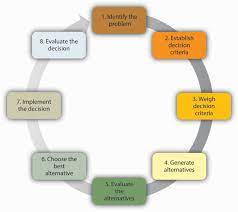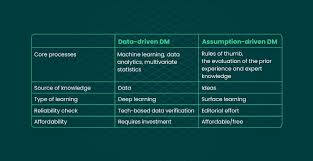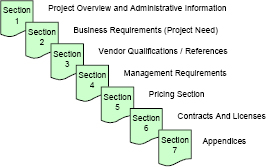Decisions, Decisions, Decisions: Understanding the Concept of Data-Driven Decision Making (DDDM)
In today’s rapidly evolving world, making informed decisions is crucial for individuals and organizations alike. The concept of Data-Driven Decision Making (DDDM) has emerged as a powerful approach to help navigate the complexities of decision making in various domains. So, what exactly is DDDM and why is it gaining so much attention?
DDDM is a methodology that emphasizes using data and analytical insights to guide decision-making processes. It involves collecting, analyzing, and interpreting relevant data to inform choices and actions. By leveraging data-driven insights, decision makers can reduce uncertainty, minimize biases, and make more accurate predictions about potential outcomes.
One of the key advantages of DDDM is its ability to provide objective evidence for decision making. Instead of relying solely on intuition or gut feelings, DDDM encourages decision makers to base their choices on empirical evidence derived from data analysis. This approach helps eliminate personal biases that can often cloud judgment.
Another benefit of DDDM lies in its ability to uncover hidden patterns and trends within complex datasets. By employing advanced analytical techniques like machine learning or statistical modeling, decision makers can gain deeper insights into the factors influencing their decisions. These insights can then be used to optimize processes, identify opportunities for improvement, or mitigate risks.
Implementing DDDM requires a combination of technical expertise and a culture that values data-driven insights. Organizations need to invest in robust data collection methods, establish reliable databases, and employ skilled analysts who can extract meaningful information from the data. Additionally, fostering a culture that encourages collaboration between different departments and promotes evidence-based decision making is essential for successful implementation.
The applications of DDDM are vast and span across various industries. In healthcare, for instance, analyzing patient data can help identify patterns that lead to more accurate diagnoses or personalized treatment plans. In marketing and sales, analyzing customer data can provide valuable insights into consumer behavior, allowing companies to tailor their strategies and offerings accordingly.
However, it is important to note that DDDM is not a one-size-fits-all solution. While data-driven insights can be invaluable, they should always be considered alongside other factors such as ethical considerations, domain expertise, and stakeholder input. DDDM should be seen as a tool to enhance decision making rather than replace human judgment entirely.
In conclusion, Data-Driven Decision Making (DDDM) is a powerful approach that leverages data and analytical insights to inform decision-making processes. By relying on objective evidence derived from data analysis, decision makers can reduce biases, uncover hidden patterns, and make more accurate predictions. Implementing DDDM requires technical expertise, reliable data infrastructure, and a culture that values evidence-based decision making. While DDDM is not a panacea for all decision-making challenges, it can undoubtedly enhance the quality of choices made in various domains.
Frequently Asked Questions about Data-Driven Decision Making (DDDM)
- Is data driven decision making effective?
- What are the 4 steps of data driven decision making?
- How do you demonstrate data driven decision making?
- What does DDDM mean?
Is data driven decision making effective?
Yes, data-driven decision making (DDDM) has proven to be effective in many situations. By using data and analytical insights to guide decision-making processes, organizations and individuals can experience several benefits.
- Improved accuracy: DDDM helps reduce the reliance on subjective opinions or intuition by providing objective evidence based on data analysis. This can lead to more accurate predictions and better-informed decisions.
- Minimized biases: Human biases can often cloud judgment and lead to suboptimal decisions. DDDM helps mitigate these biases by relying on empirical evidence derived from data analysis, which is less susceptible to personal biases.
- Enhanced problem-solving: Analyzing relevant data can uncover hidden patterns, trends, or correlations that may not be apparent through traditional decision-making methods. This deeper understanding of the factors influencing a decision can lead to more effective problem-solving.
- Optimized resource allocation: DDDM allows organizations to allocate resources more efficiently by identifying areas of high impact or potential risks. By analyzing data, organizations can prioritize investments, streamline operations, and make better use of available resources.
- Personalization and customization: In various industries such as marketing or healthcare, DDDM enables personalized approaches tailored to individual needs or preferences. By analyzing customer or patient data, organizations can provide customized experiences or treatments that better meet specific requirements.
- Continuous improvement: DDDM promotes a culture of learning and improvement by constantly collecting and analyzing data for feedback on decisions made. This iterative process enables organizations to refine their strategies over time based on real-world outcomes.
However, it is important to note that while DDDM offers significant advantages, it should not be seen as a standalone solution for all decision-making challenges. Other factors like ethical considerations, domain expertise, and stakeholder input should also be considered alongside the insights gained from data analysis.
Ultimately, the effectiveness of DDDM depends on several factors such as the quality of the data, the analytical methods employed, and the decision-making context. When implemented thoughtfully and in conjunction with human judgment, DDDM can be a powerful tool to enhance decision making and drive positive outcomes.
What are the 4 steps of data driven decision making?
Data-driven decision making typically involves four key steps:
- Data Collection: The first step is to gather relevant data from reliable sources. This can include internal data from within an organization, such as sales figures, customer feedback, or operational metrics, as well as external data from market research reports, industry databases, or public sources. It is important to ensure the data collected is accurate, complete, and representative of the problem or decision at hand.
- Data Analysis: Once the data is collected, it needs to be analyzed to extract meaningful insights. This involves applying various analytical techniques such as statistical analysis, data mining, or machine learning algorithms to identify patterns, trends, correlations, or anomalies within the dataset. The goal is to transform raw data into actionable information that can guide decision making.
- Interpretation and Insight Generation: After analyzing the data, it is important to interpret the findings and generate insights that are relevant to the decision being made. This involves understanding the implications of the data analysis in relation to the problem at hand and identifying key takeaways that can inform decision making. It may involve visualizing the data through charts or graphs to aid in understanding and communication.
- Decision Making and Action: The final step is using the insights gained from the data analysis process to make informed decisions and take appropriate actions. The decision makers need to consider not only the quantitative insights derived from the data but also other contextual factors such as domain expertise, ethical considerations, organizational constraints, and stakeholder input. The goal is to combine evidence-based insights with human judgment to arrive at optimal decisions that align with organizational goals.
It’s important to note that these steps are iterative and may involve going back and forth between them as new information emerges or additional analysis is required. Data-driven decision making is a continuous process that encourages learning from past decisions and refining future ones based on new insights gained from ongoing data collection and analysis.
How do you demonstrate data driven decision making?
Data-driven decision making can be demonstrated through a series of steps and practices that showcase the integration of data into the decision-making process. Here are some key ways to demonstrate data-driven decision making:
- Clearly define the problem or objective: Start by identifying the specific problem or objective that needs to be addressed. Clearly articulate what you want to achieve through the decision-making process.
- Gather relevant data: Collect data that is directly related to the problem or objective at hand. Ensure that the data is accurate, reliable, and comprehensive enough to provide meaningful insights.
- Analyze and interpret the data: Use appropriate analytical techniques to analyze and interpret the collected data. This may involve statistical analysis, visualization tools, or machine learning algorithms to uncover patterns, trends, correlations, or other insights within the data.
- Make evidence-based decisions: Base your decisions on the insights derived from the analyzed data rather than solely relying on intuition or personal biases. Consider how different factors and variables influence the outcomes you are seeking.
- Communicate findings clearly: Present your findings in a clear and understandable manner to stakeholders involved in the decision-making process. Use visualizations, reports, or presentations to effectively communicate complex information.
- Monitor and evaluate outcomes: After implementing decisions based on data-driven insights, continuously monitor and evaluate their impact. Measure key performance indicators (KPIs) or other relevant metrics to assess whether the decisions have achieved their intended goals.
- Iterate and improve: Use feedback from monitoring and evaluation processes to refine future decision-making approaches. Learn from both successes and failures, adapting strategies based on new insights gained from ongoing data analysis.
- Foster a culture of data-driven decision making: Encourage a culture within your organization that values evidence-based decision making. Promote collaboration between departments, provide training on interpreting data, and ensure access to reliable data sources for all relevant stakeholders.
By following these steps consistently over time, you can demonstrate a commitment to data-driven decision making and show how it positively impacts outcomes, efficiency, and effectiveness in your organization.
What does DDDM mean?
DDDM stands for Data-Driven Decision Making. It is a methodology that emphasizes using data and analytical insights to guide decision-making processes. It involves collecting, analyzing, and interpreting relevant data to inform choices and actions. By leveraging data-driven insights, decision makers can reduce uncertainty, minimize biases, and make more accurate predictions about potential outcomes. DDDM is a powerful approach that helps organizations and individuals make informed decisions based on empirical evidence derived from data analysis.




